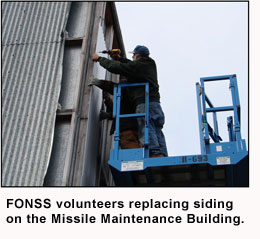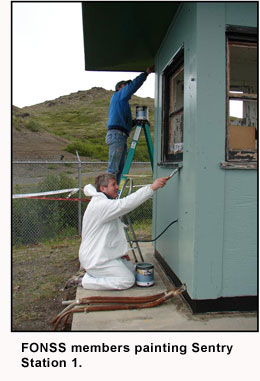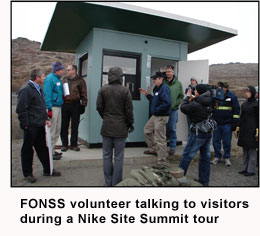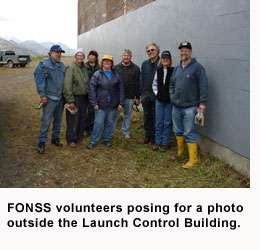
Nike Site Summit is the most intact site of its kind anywhere in the nation. Many Nike missile sites were constructed in cities where land was scarce. When the Nike sites were closed in the 1970s, most of them were demolished and the land they had occupied was sold off and developed. Site Summit's location in an active training area and adjacent to several U.S. Army firing ranges prevented this. With the end of the Cold War in 1991, interest in preserving the site began to grow, and in 1996, it was listed in the National Register of Historic Places as a remarkably well-preserved example of a Nike Hercules missile installation. The 244-acre historic district was designated a nationally significant site because of its importance as a key Army installation for detection and deterrence of enemy aircraft and for its role in test-firing Nike Hercules missiles. It is an example of technological distinction because of specialized construction methods and as a rare survivor of this class of property in Alaska.

After Nike Site Summit was deactivated in 1979, power was turned off, maintenance discontinued, and the site was essentially abandoned. Army training exercises, such as urban warfare training, sometimes took place in and around the buildings that made up the site, and trespassers entered and vandalized the site. Between 1996 and 2009, the U.S. Army considered a variety of management options for Nike Site Summit, including demolition. The most popular option for the Anchorage community, recommended in 2000, was for the Army to form a public-private partnership to preserve the site and open it to the public. With the high security measures taken by military bases across the nation following the terrorist attacks of September 11th, 2001, public access became a top concern and discussions about how to manage Nike Site Summit were placed on hold.
The Programmatic Agreement
In 2009, the U.S. Army entered into a Programmatic Agreement with the Friends of Nike Site Summit, the National Park Service, Alaska State Historic Preservation Officer, Alaska Association for Historic Preservation, Advisory Council on Historic Preservation, and National Trust for Historic Preservation to preserve Nike Site Summit and open it for guided public tours. The agreement formed a unique partnership between FONSS, a local volunteer organization dedicated to the preservation of Nike Site Summit, and the U.S. Army to preserve and interpret the site. With the formation of Joint Base Elmendorf-Richardson in 2010, the U.S. Air Force assumed the U.S. Army's responsibilities under the agreement and replaced them in the partnership.

Restoration Plans
Preservation of the site is a priority for FONSS and JBER; however, health and safety issues require that three buildings be demolished. These are the battery building and water pump house at the Integrated Fire Control area, and the vehicle maintenance shop at the Missile Launch and Storage area. Health and safety issues include hazardous materials and structural failures that are too costly to repair. The battery building was demolished over the summer of 2012, and the other two buildings are scheduled for demolition. Despite this demolition, Site Summit remains an incredibly intact historic site. JBER worked closely with FONSS, the National Park Service, and State Historic Preservation Officer to ensure that the demolition of the battery building was carried out in such a way that key features were preserved for interpretation.
Recent Accomplishments
At the Missile Launch and Storage Area, FONSS has been working since 2010 to stabilize and restore the buildings. The agreement calls for FONSS to restore six of the fourteen buildings at the Missile Launch and Storage area. Restoration work has included removing hazardous materials, residing, repainting, reroofing, and - in certain cases - completely rebuilding parts of buildings. JBER will also carry out work to stabilize other buildings. These include the two large missile launch and storage buildings, the fuse and detonator magazine, and the missile warhead magazine. To help prevent the vandalism that plagued the site for decades, JBER has installed new fencing, increased patrols of the area, and installed security cameras to help detect trespassers.

Volunteer or Schedule a Tour
FONSS, with support from JBER, the Alaska Association for Historic Preservation, and National Park Service, conducted the first public tours of Nike Site Summit in fall 2012. Tours usually take place monthly during the summer, from June through mid-September.